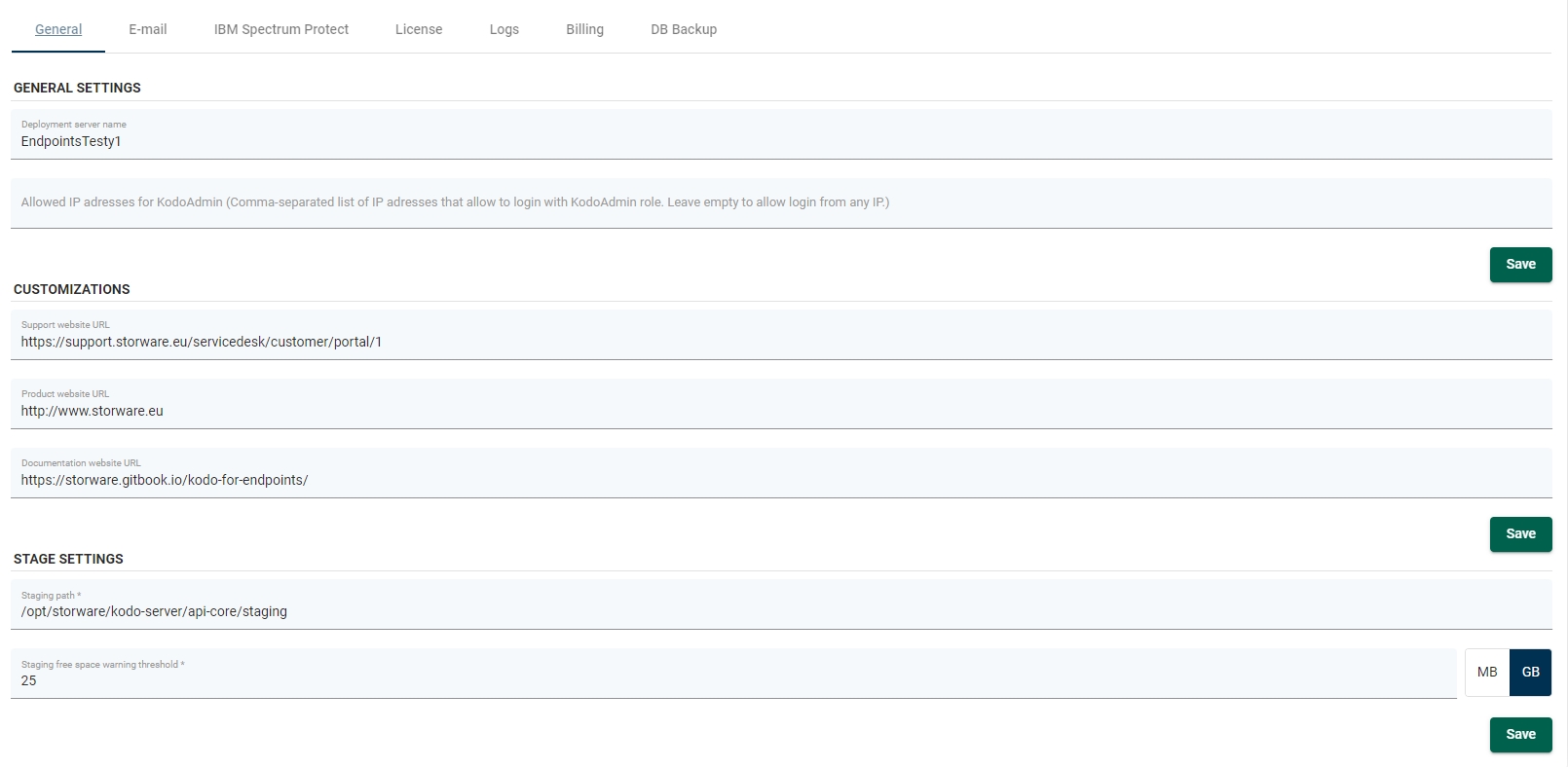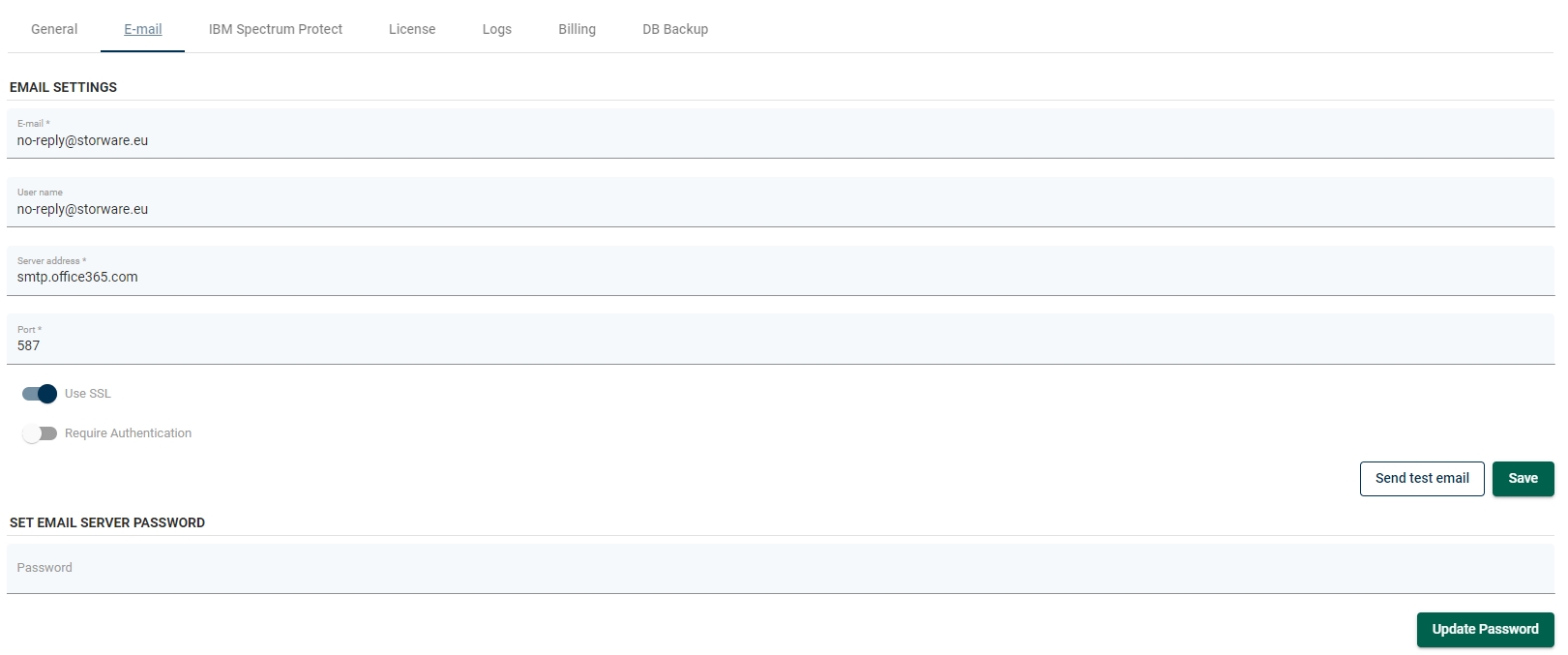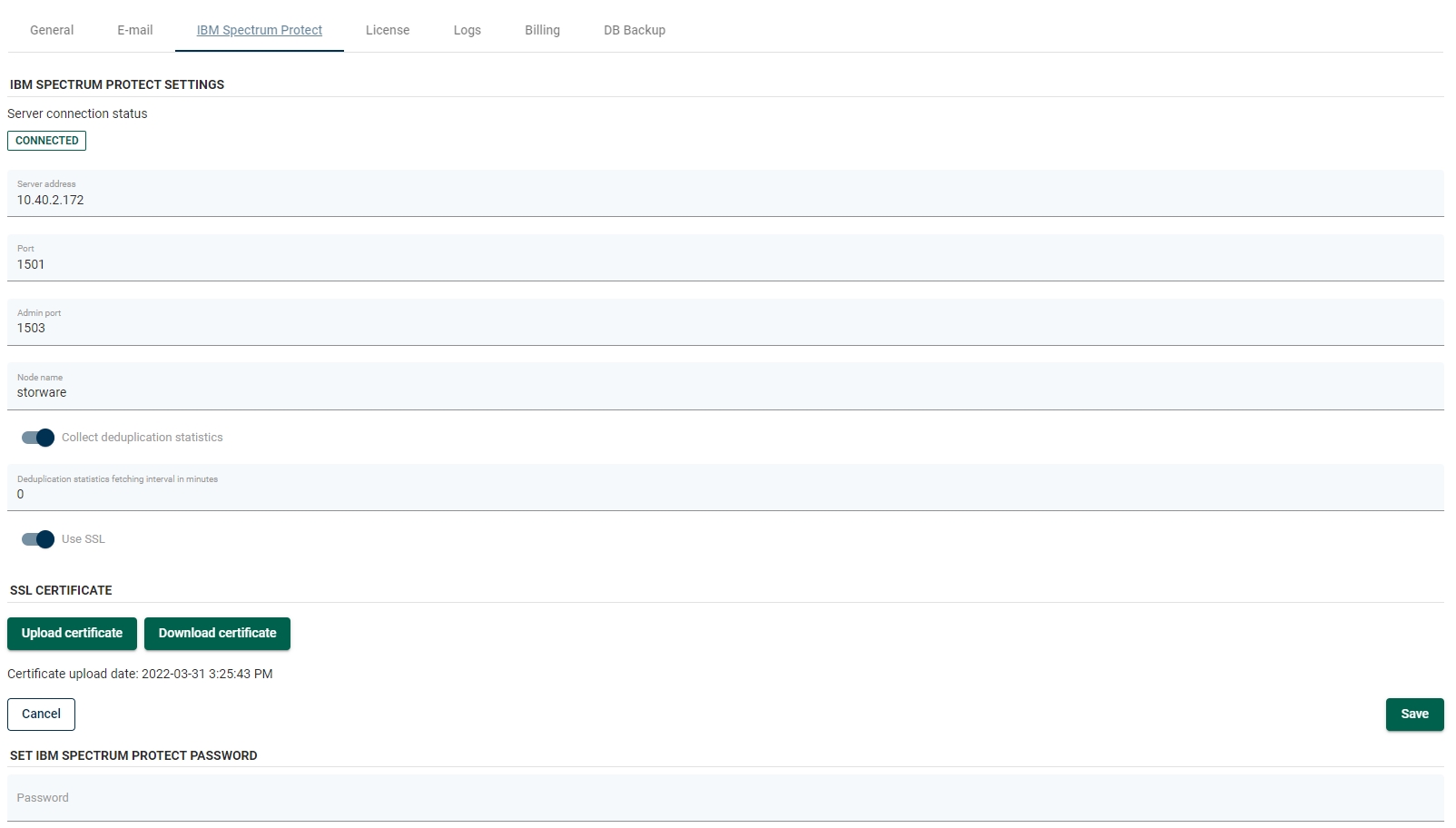Endpoints Global Settings
Settings
To change configuration settings select the Settings menu from the left pane and switch to the appropriate tabs.
GENERAL tab
This section allows you some mail server settings.
General settings
In this section, you can configure the deployment server name and also enter the IP addresses allowed to connect to the server.

Confirm the settings with the Save button.
Customizations
In this section, you can configure the URLs to the support, product, and documentation website.
Staging Settings
In this section, you can configure a path to the staging directory that is used as a temporary disk for restore jobs
Email tab
In this section, you can configure access to SMPT as a relay to send e-mail messages from the Storware Endpoint server to the defined recipients.
To set up an e-mail server:

Click the Settings located in the top bar, this will move you to the Storware Endpoints configuration page
Click the General tab.
Provide the necessary information for the e-mail server configuration
E-mail address – address used to send e-mails from Storware Endpoints
Login – user name used to login to e-mail server (optional if the server requires authentication)
Server address - IP or DNS name of the e-mail server
Port - port of the e-mail server
Use SSL - check it "on" if SSL communication is required
SSL Port - TCP Port number used by the SSL SMTP server
Require Authentication - set to “on” if the server requires authentication
Click the Save button to apply changes.
If the server requires authentication then provide a password in the SET EMAIL SERVER PASSWORD section.
Click the UPDATE PASSWORD button to save the password.
IBM Spectrum Protect tab
To set up a connection with the backup server:

Go to the Settings menu.
Click the IBM Spectrum Protect tab.
Enter all required IBM Spectrum Protect server settings:
Server address – IP/DNS name of Spectrum Protect Server
Port – Spectrum Protect client port
Administrative port – Spectrum Protect Administrative port (if different from client port)
Nodename – a nodname used by Storware Endpoint
Click the Save button.
Provide a password for the node in SET IBM SP PASSWORD section
Click the UPDATE PASSWORD button
To use the SSL connection between Endpoint Server, desktop clients, and IBM Spectrum Protect server, you have to upload the correct SP certificate. This certificate will be used by the server, and also will be distributed to all Storware Endpoints clients and used with the SSL connection between the client and the backup server.
If you already have a valid certificate file please follow the steps:
Go to the Settings menu.
Click the IBM Spectrum Protect tab.
Click the Upload certificate button and select the valid SP certificate file.
Check the Use SSL option.
Click the Save button to apply changes.
License tab
After installation or virtual appliance deployment, Endpoints Server is running in TRIAL mode for 30 days. After that time you need to provide a valid license key. __ To get a license key please contact our Storware sales team.
If you already have a valid license key please follow the steps:
Go to the Settings menu.
Click the License tab.
Click the Upload license button.
Select a license file.
Click the Open button to upload the license.
Logs tab
In this tab, you can set all parameters for Storware Endpoints server logs.
Click the Settings menu.
Provide max number of log files, log level (TRACE, DEBUG, INFO), max size of a single file, and set retention period in days.
Click the Save to apply changes.
Billing tab
In this section, you can assign client licenses to users and set billing period retention. This information is used by kodoadmin to charge all defined organizations in Storware Endpoints server separately.